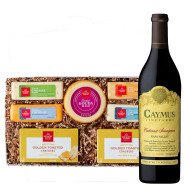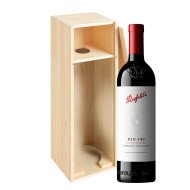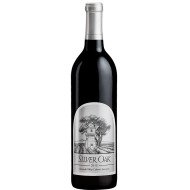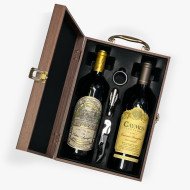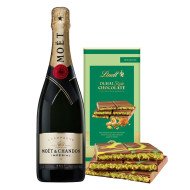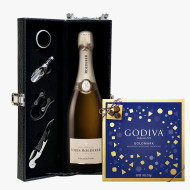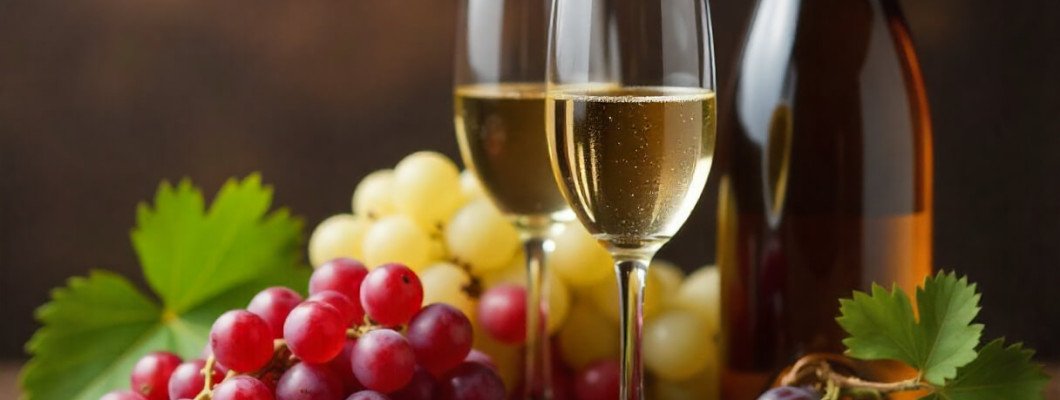
What Grapes Are Used to Make Champagne? A Guide to Champagne Grape Varieties
When you pop open a bottle of Champagne, you're not just celebrating — you're tasting centuries of tradition, terroir, and technique that place Champagne among the best French wines. But have you ever wondered what grapes are used to make Champagne? The answer lies in a small group of exceptional varieties grown in the iconic Champagne region of France.
In this blog, we’ll explore the key champagne grape varieties, how they influence flavor, and what makes each of them essential to the art of how Champagne is made.
What Is Champagne Made From?
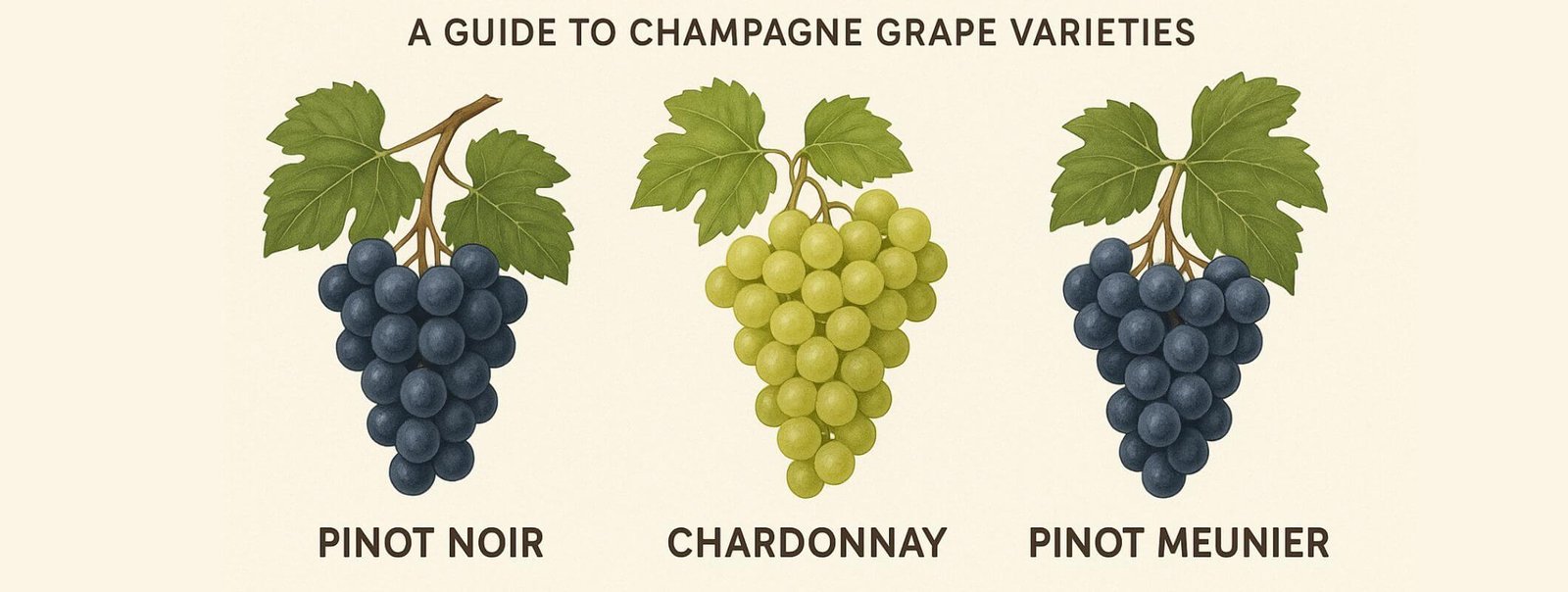
Despite the many styles of Champagne available, nearly all are made from just three primary grapes:
- Pinot Noir
- Chardonnay
- Pinot Meunier
These three form the holy trinity of Champagne grapes used across the types of Champagne, carefully blended by winemakers to create the perfect balance of acidity, structure, and flavor. Now you might be wondering, are there any other grape varieties used in Champagne? Yes there are, although rare. Champagne regulations allow four additional lesser-known grapes namely: Arbane, Petit Meslier, Pinot Blanc, and Pinot Gris.
These account for less than 0.3% of total plantings and are typically used by niche or biodynamic producers.
Additionally, did you know champagne has also embraced innovation? There is an exciting development in Champagne viticulture. Beyond the rare traditional grapes, there is the addition and approval of Voltis, a hybrid grape recognized in 2021 and developed to meet strict Champagne quality standards.
It was created with sustainability in mind due to it being resistant to diseases like downy and powdery mildew. This feature allows producers to use less chemical treatments. Although its use is currently limited, this arrival signals a turning point in the area-folklore, as climate resilience matches-up to modern terms.
Next let's take a close glance at the key Champagne grape varieties: how they differ from each other and how they can impart that touch to your glass.
1. Pinot Noir in Champagne
Pinot Noir is a black grape that brings structure, body, and red fruit notes to Champagne. While it’s a red grape, it’s often used in white Champagnes by removing the skins early in the process. It thrives in the Montagne de Reims and the Aube regions.
- Flavor Profile: Cherry, raspberry, and sometimes a touch of spice
- Why it’s used: To add backbone, aging potential, and complexity
2. Chardonnay
Chardonnay is the only white grape of the main Champagne varieties and is known for its elegance, minerality, and finesse. It’s predominantly grown in the Côte des Blancs.
- Flavor Profile: Citrus, green apple, brioche, floral
- Why it’s used: To enhance acidity and freshness, and for longevity in aging
Are you curious and want to find how Chardonnay stacks up against its aromatic counterpart? Read our guide on Chardonnay vs Sauvignon Blanc.
3. Pinot Meunier
Often the underdog, Pinot Meunier is a black grape like Pinot Noir but offers fruitiness and approachability. It ripens earlier and is more resistant to frost, making it a favorite in cooler vineyards.
- Flavor Profile: Plum, red berries, floral hints
- Why it’s used: Adds roundness, fruitiness, and makes Champagne more youthful and vibrant
These grapes form the heart of Champagne’s identity, and while grape selection is crucial, where and how they are grown and processed is just as important.
That’s where the Champagne region’s strict quality regulations come into play—ensuring every bottle meets time-honored standards of excellence. Let’s take a closer look at the laws that protect the Champagne name and guarantee its unmatched quality.
The Champagne Region & AOC Rules: Quality Protected by Law
The Champagne grape varieties are governed by Appellation d’Origine Contrôlée or AOC that ensures that the name "Champagne" is reserved only for sparkling wines that meet precise standards set by French law. This covers everything from where the grapes are grown to how the wine is produced. Here are some of the most important rules that protect Champagne’s legacy:
- Geographical Delimitation
Only grapes grown in the legally defined Champagne region of northeastern France can be used. Anything produced outside this area, even with the same method, cannot legally be called Champagne. - Hand Harvesting
All grapes must be picked by hand. This protects grape quality and avoids premature oxidation, ensuring the freshness and acidity needed for high-quality Champagne. - Yield Control
Strict limits are placed on how many grapes can be harvested per hectare and how much juice can be extracted from each pressing. This preserves the wine’s balance and prevents overproduction. - Méthode Champenoise Requirement
All authentic Champagne must undergo its secondary fermentation in the bottle—a process that creates the natural bubbles. Additionally, specific minimum aging periods on the lees are required:
15 months for non-vintage Champagne or 12 months on lees
36 months minimum for vintage styles
These rules are part of what gives Champagne its fine bubbles, complexity, and legendary status. This rigorous attention to detail guarantees that true Champagne stands apart from other sparkling wines. If you want to explore more about France's sparkling wine legacy, especially in comparison to its southern neighbor, read our French vs. Italian wine guide.
How Champagne Is Made: A Step-by-Step Journey from Vine to Flute
The method used to produce Champagne is called the Traditional Method or Méthode Champenoise, a meticulous and time-intensive process that sets true Champagne apart from other sparkling wines. Let’s break down the key steps in how Champagne is made, from grape to that perfect pop.
1. Harvesting – Handpicked Precision
Grapes used in Champagne are harvested entirely by hand, typically between late August and early October. This is done to preserve the integrity of the grape skins and to prevent premature fermentation. Only the finest bunches are selected, ensuring high acidity and freshness—qualities essential for sparkling wine.
2. Pressing – Gentle Extraction
The freshly picked grapes, including Pinot Noir, Chardonnay, and Pinot Meunier, are taken to the press quickly to maintain freshness. Red grapes Pinot Noir and Meunier are pressed carefully to avoid extracting color from the skins. This allows winemakers to make white Champagne from red grapes—a unique feature of this process.
Only the first gentle pressing or the cuvée is typically used for the highest quality Champagne. The tail pressings aka the taille may be used in lesser blends or sold off.
3. Primary Fermentation – Turning Juice into Wine
The grape juice is fermented into base wine called vin clair using stainless steel or oak barrels. This stage converts the natural sugars into alcohol. Each grape variety, vineyard, and plot is often vinified separately to give winemakers more blending options.
This fermentation results in a still non-sparkling wine that is dry, high in acidity, and relatively low in alcohol.
4. Blending or Assemblage – The Winemaker’s Art
One of the most crucial steps in how Champagne is made is the blending of different base wines. Winemakers blend wines from various grape varieties, vineyard plots, and even vintages to achieve a consistent house style or to create a unique vintage Champagne.
- Non-vintage Champagne is a blend of multiple years.
- Vintage Champagne comes from a single, exceptional year and is made only in the best harvests.
This step is where the skill of the cellar master chef de cave shines the most. To explore the differences in aging, structure, and flavor, read more on Vintage vs Non-Vintage Champagne.
5. Second Fermentation – The Birth of Bubbles
After blending, the wine is bottled with a mixture of sugar and yeast known as the liqueur de tirage. The bottle is sealed with a temporary cap.
Inside the bottle, a second fermentation occurs. The yeast consumes the sugar, producing carbon dioxide, which cannot escape, and thus naturally carbonating the wine.
This step is what creates Champagne’s signature sparkle.
6. Aging on Lees – Developing Depth
Once the second fermentation is complete, the bottles are left to rest horizontally in cool chalk cellars. The dead yeast cells known as lees remain in the bottle, gradually enriching the wine with creaminess, complexity, and toasted notes.
- Non-vintage Champagne must age for at least 15 months, with 12 months on lees.
- Vintage Champagne requires a minimum of 36 months, though many are aged for far longer.
The longer the aging, the finer and more persistent the bubbles and the more complex the flavor.
7. Riddling or Remuage – Gathering the Sediment
Once aging is complete, the lees, dead yeast must be removed. Bottles are gradually tilted and rotated using a process called riddling, which collects the sediment in the neck of the bottle.
Traditionally done by hand on wooden racks called pupitres, modern Champagne houses often use automated gyropalettes to speed up the process.
8. Disgorgement – Removing the Lees
The bottle neck is frozen, trapping the sediment in an ice plug. When the cap is removed, the pressure in the bottle expels the frozen plug—a step known as disgorgement.
This crucial phase ensures the Champagne is clear and sediment-free.
9. Dosage – The Final Touch
Before sealing the bottle permanently, a small amount of wine and sugar called the liqueur d’expédition is added. This determines the sweetness level of the Champagne:
- Brut Nature / Zero Dosage – Bone dry (0-3 g/l sugar)
- Extra Brut – Very dry (0-6 g/l)
- Brut – Dry (up to 12 g/l). It is the most common style
- Extra Dry – Slightly sweeter than Brut
- Demi-Sec – Noticeably sweet
To know more about these labels and what they mean in terms of sweetness level read our blog on Is champagne sweet.
10. Corking and Labeling – Ready for the World
A final cork like mushroom-shaped is inserted, held in place with a wire cage called muselet. The bottle is then labeled and ready for shipping—or aging further in your personal cellar!
Now that we have explored how Champagne is made, every sip feels more meaningful and adds a deeper appreciation. From the first gentle press to the final pop, every bottle is a product of tradition, patience, and passion. It’s the perfect harmony of nature, craftsmanship, and time, brought to life by the iconic champagne grape varieties: Pinot Noir, Chardonnay, and Pinot Meunier.
So the next time you raise a glass, know you're toasting to heritage in every bubble. And to continue your Champagne journey, why not share the elegance with those you love?
Explore our thoughtfully curated Champagne gift baskets and sets that are perfect for celebrations, heartfelt gifts, or simply indulging in luxury that tells a story.
FAQs
- What are the main grapes used in Champagne?
The three main champagne grape varieties are Pinot Noir, Chardonnay, and Pinot Meunier. - Is Champagne made from white or red grapes?
Both! Pinot Noir and Pinot Meunier are red grapes, while Chardonnay is a white grape. However, most Champagne is white due to gentle pressing and early removal of grape skins. - Can Champagne be made from just one grape?
Yes. Blanc de Blancs is made exclusively from Chardonnay, and Blanc de Noirs is made from Pinot Noir and/or Pinot Meunier.























